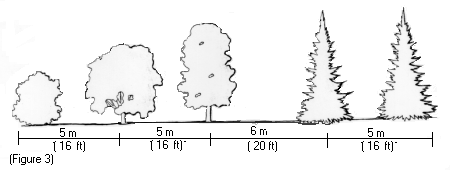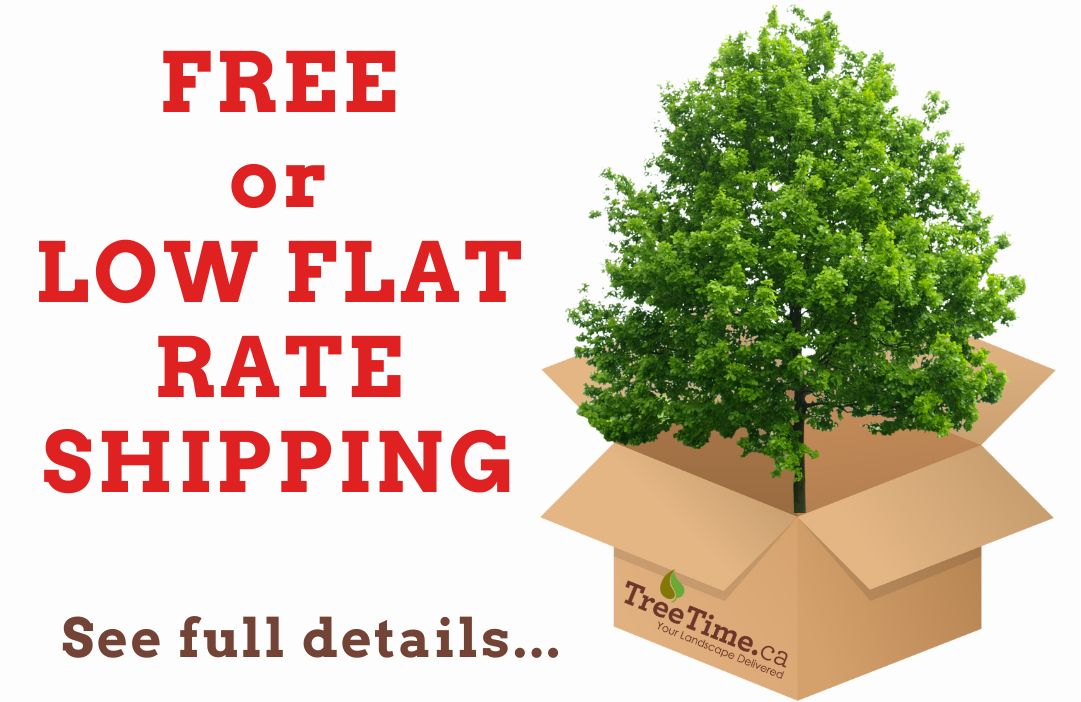Mon-Fri 9am - 5pm Mountain time
Cart reopens in November
Subscribe to our email list
to stay updated
How to plant a shelterbelt
show all planting questionsProperly planned shelterbelts provide many benefits including:
- reducing wind
- acting as visual screens
- controlling blowing snow
- protecting buildings and decreasing energy consumption
- capturing atmospheric carbon
- helping control soil erosion
- providing habitat for wildlife
- beautifying farmyard
- increasing property value
Click here to see all our shelterbelt trees
The first step in planning an effective shelterbelt is to make sure it is located correctly. Shelterbelts should be oriented so they are perpendicular to the prevailing winds. This means that in the prairies where the prevailing winds typically come from the north and west the shelterbelt rows should be located along the north and west sides of the farmyard. It is also important to ensure that the shelterbelt is not too close to buildings and driveway, otherwise drifting snow may become an issue. Make sure that the inside row of the shelterbelt which is closest to the farm yard is at least 100 feet (30 meters) from any structures or roads.
The next step is to decide on how many rows your shelterbelt will require in order to provide adequate wind protection for the farmyard. Shelterbelts can contain anywhere from 3 to 5 rows depending on the amount of space you have and the level of wind protection you desire.
An effective shelterbelt should contain a combination of shrubs, fast growing trees, and dense long lived trees. The outside row of a shelterbelt should generally be a dense shrub that will act to reduce wind near the ground and act as a snow trap. The next row should consist of a fast growing tree species that will allow the shelterbelt to quickly gain height. The third row should be made up of long lived trees that will allow shelterbelt to remain effective for a long time. The fourth and fifth rows that would be closest to the yard should be made up of tall dense crowned trees that retain their foliage throughout the year. Should you have limited space, drop the third and fifth row and go with a three row shelterbelt.
The table below makes some recommendations on species that could be planted in the various rows:
Shelterbelt Species Recommendations | ||||||
 | ||||||
| Outside Row: | 2nd Row: | 3rd Row: | 4th & 5th Row: | |||
|---|---|---|---|---|---|---|
| Common Caragana | Acute Willow | Bur Oak | Blue Spruce | |||
| Nanking Cherry | Golden Willow | Manitoba Maple | White Spruce | |||
| Peking Cotoneaster | Laurel Leaf Willow | Green Ash | Norway Spruce | |||
| Villosa Lilac | Manitoba Maple | Poplar species | Lodgepole Pine | |||
| Common Purple Lilac | Amur Maple | Red Pine | ||||
| Peking Lilac | Scots Pine | |||||
Spacing between the various shelterbelt rows is the next consideration. The chart above shows recommendations on how far apart the various rows should be. The spacing shown is designed to allow for the passage of maintenance equipment, as well as provide enough room for the trees to grow.
Spacing between species within rows is also important to ensure that the shelterbelt fills out nicely and becomes an effective windbreak. The spacing between shrubs in the outside row should generally be about 3 feet (1m), with caragana being an exception that should be planted about 1 foot (0.3m) apart. Spacing of about 8 feet (2.5m) between trees within the 2nd and 3rd rows is appropriate. Trees within the 4th and 5th rows should be spaced about 10 feet (3.0m) apart.
Now that you have planned your shelterbelt the next step is to order your trees and arrange a planting day. One of the most important considerations in planting a shelterbelt is to ensure that the roots of seedlings you are planting stay moist and cool throughout the process. For more information on planting see our web page section on how to plant a seedling.
Related Questions:
- How to fertilize a new tree
- How to plant a tree
- Container vs. bareroot stock: which should I buy?
- What size trees should I buy?
- Premium vs. standard stock types: which should I buy?
This question has the following tag: planting
What will you find at TreeTime.ca?
A huge assortment of trees, shrubs, and berry seedlings at prices garden centers, tree farms, and plant nurseries just can't match.
Don't know where to start?
Read our how to order page.
